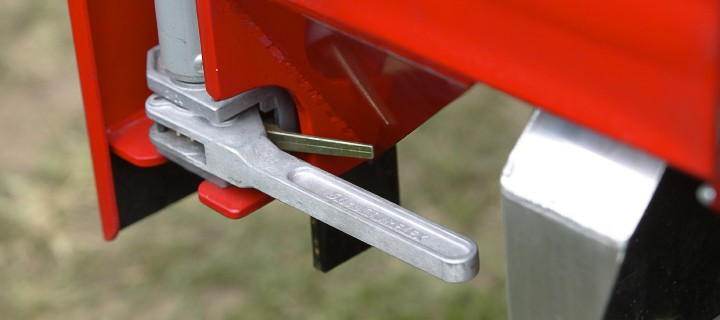What Is a Truck Curtain Tensioner?
Curtain-side trucks are widely used in freight and logistics for their easy loading access and flexible side protection. But to function properly, the side curtains must be kept tight and secure. This is where a truck curtain tensioner becomes essential. Whether you’re managing a fleet or operating a single trailer, understanding how curtain tensioners work—and why they matter—can help you maintain safety, compliance, and load integrity on every journey.
What Does a Curtain Tensioner Do?
A curtain tensioner is a mechanical device used to keep the side curtain of a truck or trailer pulled tight against the frame. It prevents the curtain from sagging, flapping in the wind, or coming loose during transit. The tensioner:
- Maintains consistent pressure on the curtain
- Prevents water ingress and wind damage
- Improves aerodynamic performance
- Helps meet load restraint requirements
- Prolongs the life of the curtain and associated hardware
In short, it’s a small part with a big role in protecting your cargo and keeping your vehicle roadworthy.
Types of Truck Curtain Tensioners
Different setups and preferences call for different types of tensioners. Some are installed externally for easy access, while others are integrated into the curtain pole itself for a cleaner appearance.
Front and Rear Tensioners
These are placed at either end of the curtain tracking system:
- Front tensioners secure the curtain at the front bulkhead
- Rear tensioners hold it tight at the back, near the load doors
Both are vital for keeping the curtain locked in place and sealed from end to end.
Internal vs External Tensioners
- Internal tensioners are hidden inside the pole or track. They’re less exposed to the elements and tampering, giving a neater finish.
- External tensioners are mounted outside and typically feature a lever or ratchet. They’re easier to access and adjust during routine stops.
Ratchet-Style vs Lever-Type Tensioners
- Ratchet tensioners offer precise adjustment and high tension control, ideal for long-haul or high-speed use.
- Lever-style tensioners are quicker to use but may provide slightly less holding power.
If you’re looking for a dependable replacement option, this truck curtain tensioner is designed for Structurflex-style systems and is suitable for many right-hand applications.
Why Curtain Tension Matters
Keeping your curtain properly tensioned isn’t just about appearance. It has practical and legal implications:
- Reduces wind resistance and noise
- Protects the cargo from water and dust
- Prevents wear and tear on curtain fabric and buckles
- Ensures compliance with the National Load Restraint Guide (Australia)
A slack curtain can lead to load shift, damage, or safety violations—none of which are worth the risk.
Signs of a Faulty or Worn Tensioner
You may need to inspect or replace your curtain tensioner if you notice:
- The curtain is visibly sagging or loose
- You struggle to apply proper tension
- The ratchet mechanism is corroded or jammed
- The curtain shifts or flaps while driving
Replacing a faulty tensioner is an easy way to restore the full effectiveness of your curtain system.
How to Maintain and Replace Curtain Tensioners
Regular inspection is key. Here’s what you should do:
- Check weekly for signs of wear, especially on high-use vehicles
- Lubricate moving parts with light grease to prevent rust
- Tighten mounting bolts to ensure the tensioner stays aligned
- Replace worn tensioners promptly to avoid curtain damage
Most truck curtain tensioners are simple to install with standard tools, though always follow the manufacturer’s fitting instructions for best results.
Choosing the Right Curtain Tensioner
When selecting a new or replacement tensioner, consider:
- Truck or trailer make and curtain system type
- Internal or external mounting preference
- Left-hand or right-hand configuration
- Handle style (ratchet or lever)
- Material quality for long-term durability
It’s worth investing in tensioners made from stainless or galvanised steel to resist corrosion and frequent use.
Bottom Line
A truck curtain tensioner might be a small part of your vehicle, but it plays a major role in securing your load, protecting your curtain, and keeping your vehicle compliant. Regular checks, timely replacement, and choosing quality parts will ensure your curtain system remains reliable trip after trip.






